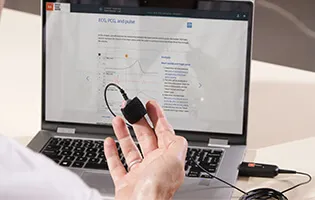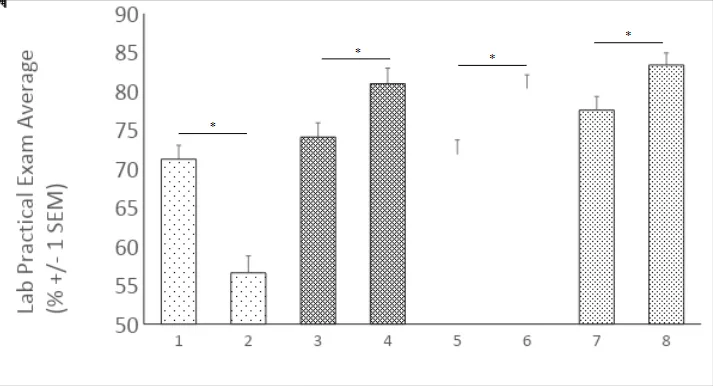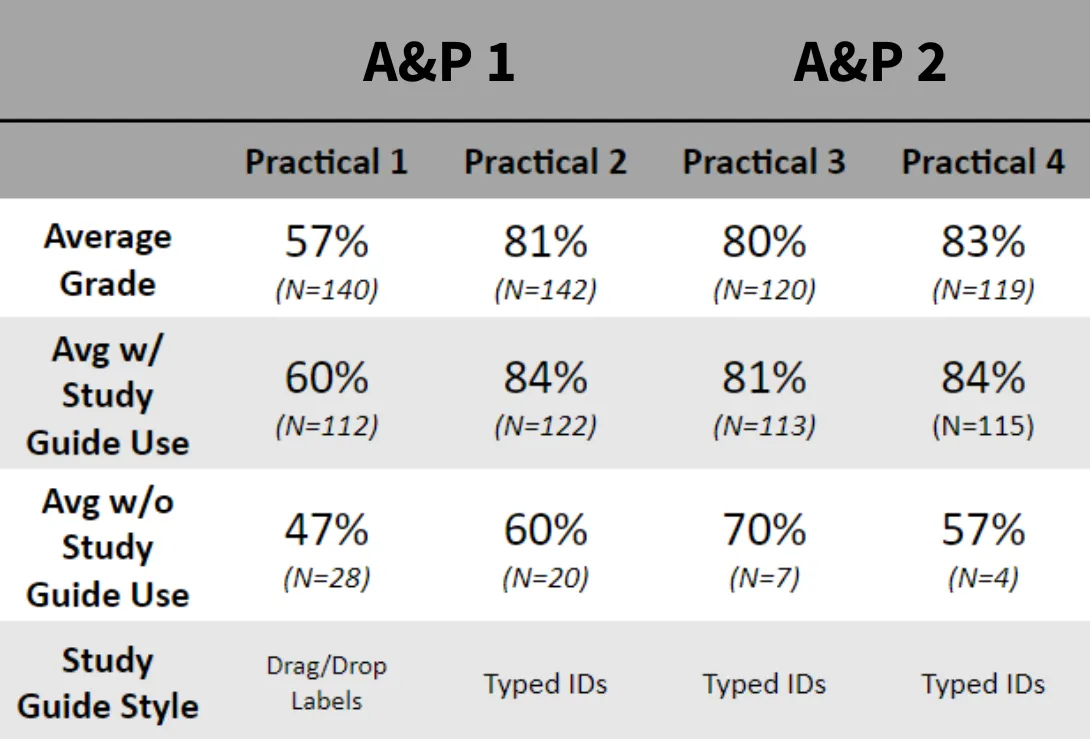Each year, the Human Anatomy and Physiology Society (HAPS) brings together hundreds of educators to celebrate and promote excellence in teaching anatomy and physiology. This year, ADInstruments was proud to sponsor two educators in attending the meeting and presenting on their unique teaching experiences and findings. In this blog, we highlight the presentation material covered by Dr. James Windelborn, Assistant Professor and A&P Coordinator at Regis College in Weston, Massachusetts.
Taking on the challenge
High stress. Poor performance. Additional direction needed for students.
These were among the chief challenges that Dr. James (Jim) Windelborn was facing in his lab sections.
Jim serves as an Assistant Professor and as the Anatomy and Physiology Coordinator at Regis College. When he assumed his role back in 2022, Jim was quick to make several observations about the student experience across anatomy and physiology lab sections:
- Many students were not clear on how to use lab time to prepare for practical exams
- Vocabulary was a barrier for students when it came to understanding key concepts
- Students were experiencing high stress levels related to exams
These hurdles were translating into poor performance on practical exam scores. Eager to support these students, many of whom are first-generation, Jim set out on a mission to implement new strategies that would address student concerns and ultimately improve the lab experience.
“Over 50% of students in our A&P courses are first-generation, and my current focus is course design that will best support that population.” -Jim Windelborn
Adopting new technologies
In 2022, Jim applied and was selected as the recipient of the Lt Sensors Sponsorship, which you can read more about here. As the winner of the sponsorship, Jim was able to adopt the online learning platform Lt and Lt Sensors hardware for his courses. The Lt software platform was an ideal solution: Jim could utilize pre-made lessons and labs or easily create his own lessons without programming involved.

Lt Sensors for human physiology allows students to collect and analyze their own signals via USB technology
The ability to integrate with Lt Sensors hardware meant that his students could record and analyze their own biosignals, helping them to connect the key concepts they had been struggling with.
Outcomes and improvements
With new technologies in hand, Jim worked to restructure the laboratory (which had historically been very anatomy-focused) to incorporate more physiology content.

Lab practical exams for A&P 1 and A&P 2 broken down by topics
Jim fully utilized what was available in the content packs to keep students engaged - including already built pre-lab and lab activities. He also had access to a suite of media such as videos of lab protocols, histology images, models, and more!
Over the course of the year, the impact of Jim’s efforts became apparent. In comparison to previous practical exam averages, significantly higher scores were observed for the second, third, and fourth practical exams. In fact, the average score for the third practical exam had a percent increase of approximately 11%, going from an average of 72% in the pre-intervention year to an average of 80% the next year (after intervention with Lt).

Pre- and Post-Intervention scores were significantly different (2-tailed t-test; *p<0.02)
In addition to comparing practical averages before and after the intervention of Lt and Lt Sensors, Jim also took a look into how effective Lt-built study guides were as a tool for practical preparation. He discovered not only that students using the study guide were more successful every time, but also that the format of the study guides played an important role.

This chart highlights the importance of the study guide and it's style
The study guide proved to play a critical role in student performance, with an average difference of about 18% across practical scores for students who used the study guide and the practical scores of those who did not. The highest difference in these scores was observed on the fourth practical, which had a difference of 27% in the average score values for these two groups (average score of 84% for students who used the study guide vs. average score of 57% for students who did not use the study guide).
Seeing the impact his efforts have already made, Jim hopes to continue adding in more hands-on physiology experiments utilizing Lt Sensors. He will continue working with students and peer tutors to better understand how to use Lt study guides at the start of the year.
HAPS 2024
At the HAPS 2024 Annual Meeting, Jim presented on this experience in a workshop titled Increasing Student Performance AND Engagement with Interactive Digital Laboratory Manuals and Study Guides in an Introductory Anatomy and Physiology Course. ADInstruments was proud to sponsor this workshop and we are thrilled to continue supporting incredible educators like Jim in their commitment to enhancing anatomy and physiology education.
If you would like to view Jim’s full presentation and learn more about how he improved student performance and engagement in his courses, you can click here.
We would like to thank Dr. James Windelborn once again for taking the time to attend HAPS and present on his experiences!

Dr. James Windelborn
Dr. James Windelborn
Assistant Professor
STEM Department
Regis College
Dr. James Windelborn has earned a B.S. in in Cell and Structural Biology from University of Illinois, and a Ph.D. in Neuroscience from the University of Wisconsin.
Jim has previously been awarded the Washington College Alumni Association Distinguished Teacher of the Year Award in May 2021.
